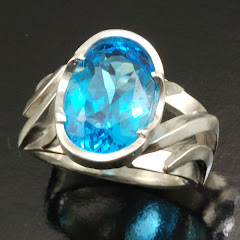Buying pearls can be confusing, with lot's of different names for them and an endless range of prices. From wiki, here is what jewelers look for when determining quality:citation needed] This is due to bad health and/or non-survival of the process, rejection of the nucleus and their sensitivity to changing climatic and ocean conditions. Before the days of cultured pearls, black pearls were rare and highly valued for the simple reason that white pearl oysters rarely produced naturally black pearls, and black pearl oysters rarely produced any natural pearls at all. 
The value of the pearls in jewelry is determined by a combination of the luster, color, size, lack of surface flaw and symmetry that are appropriate for the type of pearl under consideration. Among those attributes, luster is the most important differentiator of pearl quality according to jewelers.
All factors being equal, however, the larger the pearl the more valuable it is. Large, perfectly round pearls are rare and highly valued. Teardrop-shaped pearls are often used in pendants.
We like to use mainly cultured pearls for our fine Asheville jewelry. They are the most affordable and have a consistent luster on par with most saltwater or wild pearls. They give the most bang for the buck.
With all the different brands floating around, it's easy to feel like you have to spend a fortune to get the best name. This just isn't true. Unless you have a lab to do testing on them, you really won't be able to tell the difference between cultured saltwater or freshwater pearls. Look for the size you like, good symmetry, and a nice iridescence in the color you prefer.
The exception to that is the black pearl, still relatively rare and difficult to produce. A nice black pearl can get expensive. Here is more on the black pearl from wiki:
Black pearls, frequently referred to as Black Tahitian Pearls, are highly valued because of their rarity; the culturing process for them dictates a smaller volume output and can never be mass produced.[
Black cultured pearls from the black pearl oyster – Pinctada margaritifera – are not South Sea pearls, although they are often mistakenly described as black South Sea pearls. In the absence of an official definition for the pearl from the black oyster, these pearls are usually referred to as "black Tahitian pearls".
One of the most valuably types of pearl is the wild South Sea pearl, which must be dived for, and comes in different colors depending on the host. Sometimes black pearls are mislabeled South Sea pearls, further adding to the confusion. The harder they are to harvest, the more valuable they become. Before culturing pearls, three tons of oysters would yield only 3 or 4 pearls.
Pearls are another one of those heavily marketed industries that make you feel like you need to spend a fortune to get good quality. This just isn't the case, if you arm yourself with some good information.
Here is a natural cultured pink pearl pendant set in yellow gold by Jim Charneski.
For the full article from wiki, click here.






No comments:
Post a Comment